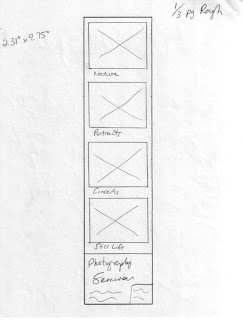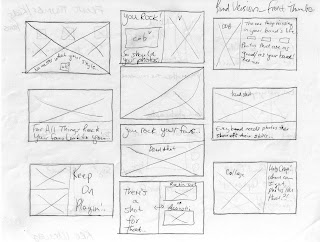I took away a lot of extremely useful information from Joe Grigsby's presentation on emerging media last week. He shared so many useful pieces of information that I couldn't write fast enough to keep up with him. Here are some great bits I took away from the seminar:
Emerging media is defined as the consumer behavior trends that transform how the consumer connects to content, each other, and a broader society. There are two main media trends today, and they are social and mobile.
Media consumption continues to shift to digital. This is something we all know, but what may be less widely known is that 66% of all media consumption today is digital, and, by 2020, that number will be 80%. 76% of broadband users are active contributors to social media and are active content creators, and this will continue to increase with each generation.
Something else I found interesting and hadn't really thought of before is that 92% of all two-year-olds in the U.S. have some kind of online persona due to their parents or families posting photos of them online.
If Facebook's 500 million users made up one country, it would be third in the list of the largest in the world, just behind China and India. Facebook is slowly taking over Google as internet users' starting point. The difference between Google and Facebook as far as social media goes is that Google represents the consuming part of the interaction, and Facebook is where the contributions to online society take place.
Further to social media, as far as companies and brands are concerned, they don't always have control over their reputation. Because consumers trust other consumers twice as much as they trust marketers, word of mouth is far more effective today than it was even ten years ago. Brands can suffer badly if even one person has a bad experience with their product, and that one person tells all of their friends. However, that can go both ways. If a consumer really likes a certain brand or product, they will tell their friends about that, as well, and the brand's reputation can skyrocket overnight.
Another interesting piece of information is that marketing equals reach and influence. In the online world, social media has the reach, and your friends have the influence.
Thanks to Google blogs, Twitter, Yahoo! Answers, and many other sites, marketers have the opportunity to "listen in" on these conversations about their products and get invaluable feedback about what people like and don't like. It is also a good opportunity to put out any fires if someone is talking about their bad experiences with the brand.
The possibilities and opportunities that social media presents are limitless; however, it is also time-consuming. Companies must maintain that relationship with the consumers. They can't just set up a Twitter account and never update it, and the same goes for Facebook pages and the like. If consumers never see updates on these pages, they will get bored and move on to the next new thing.
While listening in on these conversations, over time, marketers can figure out what is relevant to specific groups of people. This type of information is quite useful for direct mail and targeting specific audiences. Rather than sending something about golf to someone who couldn't possibly care less about it, the company can find out what they are interested in and send them something relevant to their interests.
Another important part of utilizing this information obtained from listening to consumers' conversations is integrating it into their day-to-day lives. For instance, you can link your Facebook account to another website you log into on a regular basis. That way, if you don't happen to visit a certain brand's website everyday, you're definitely more likely to log into Facebook quite regularly.
Social media is also useful in the search for employment. A website called Simply Hired integrates Facebook into their site and you can see which friends are in which fields if they have signed up for an account. When you see your friends "liking" things, you are likely to check it out, as well.
Activation is another important part of using the information. Running ads on Facebook is a great way to get your brand name out there. You can also target groups of people with specific interests listed in their profiles and avoid sending them information that does not pertain to them.
Accessing media with a mobile phone is growing very quickly, as well. With mobile phones, you are always connected to your social media site of choice. Socializing via text messaging is the most popular means of communication among 12 to 17-year-old girls. Texting surpassed email and phone calls with this particular age group.
Twitter is a popular site with mobile users. 84% of Twitter users access their account via their mobile phone, and 30% of Facebook users log on through their phones.
By 2020, accessing the internet via mobile media will surpass the use of desktop computers. Tablet computers, such as the iPad, will actually outsell desktops and laptops by 2015.
It is important to understand your target audience and what devices they use and how much they use them. The objective is to make them want to add your company as an "app" on their phone. What makes your brand stand out amongst the thousands of other apps for Smartphones?
Using text messaging is an effective means of reaching consumers. You can give users the option to sign up for alerts, coupons, surveys, and sweepstakes via text messaging.
In the past, physical media and digital media have been in two completely separate worlds. With the growing use of social media, the consumer will see a physical ad in a store or on the street, or wherever they may be and then head home to log on to the Internet for more digital information about the product. This combines the two worlds of physical and digital media.
After his presentation, Joe answered a few questions. One of them was how his company surveys consumers to find out their wants and needs. He said they use two methods: primary research and secondary research. Primary research is direct feedback from consumers, listening in on forum conversations, and focus groups. Secondary research is the consulting of companies of experts on different types of products.
Another question was how his company measures success. Joe said that they measure the success of their endeavors by the size of the span of their reach and influence. The four main steps to get from reach to influence are 1) awareness, make the consumers aware of your company's presence; 2) influence, tell them why they should choose your company; 3) reach, persuading them to try your product; and 4) conversion, making them a new loyal customer of your product.
One of the most important things I took away from the presentation is that we should not focus on the "what" of marketing, but the "why." In other words, the "what" represents the present technology and method of marketing, and the "why" is the obtaining of the consumer relationships and knowing your target audience. I also heard this in Brendan Murphy's symposium: technology is and always will be changing on a day-to-day basis. We should be familiar with it but should not let that be the most important aspect of marketing ourselves to potential customers. How we market today, be it via Facebook or other online means, will not be the same in even five years from now. We need to adapt our "whys" to each type of new emerging media.










































 On Friday, our class had the opportunity to attend a symposium with Brendan Murphy, who is a graduate of the GIT department of PSU and now works for the Lippincott branding firm in NYC. He had lots of interesting information to share.
On Friday, our class had the opportunity to attend a symposium with Brendan Murphy, who is a graduate of the GIT department of PSU and now works for the Lippincott branding firm in NYC. He had lots of interesting information to share.



